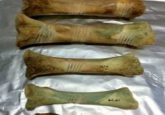Western blotting: 40 years on

With the well-known technique reaching a big birthday milestone, is the western blot still going strong, or has it reached a midlife crisis?
While some say life begins at 40, that’s certainly not true for the western blot technique, which has been incredibly fruitful over its 40-year lifespan thus far.
While the parents of the technique are slightly disputed, its ‘birth’ year is clear – 1979, when both the groups of George Stark and Harry Towbin published similar approaches 2 months apart. Simultaneously, W. Neal Burnette was developing the technique at the Fred Hutchinson Cancer Research Center (WA, USA). It is this west coast location as well as a pun on Southern blotting that led to the technique’s name. Burnette’s paper was initially rejected for being too pedestrian, but was eventually published in 1981.
Since then, it has been utilized in thousands of research projects. While it has historically not escaped the clutches of scientific fraud and the reproducibility crisis – including figure manipulations and problematic antibodies (although it should be noted it is in itself useful for antibody validation) – its use by the scientific community remains fairly steady, and an analysis has suggested it remains the most-used technique in protein-related publications from the last decade.
 South, north, east and west-ern: the story of how the western blot came into being
South, north, east and west-ern: the story of how the western blot came into being
The western blot may appear to be just another staple lab technique. However, there are some stories surrounding its invention that are definitely worth knowing.
Recent examples of its utility are clear in the fields of pain management and cancer, where it is helping us to improve basic understanding and continue the hunt for biomarkers and therapeutics.
This all implies the technique hasn’t yet reached a midlife crisis and, indeed, efforts are ongoing to continue to improve the method – including miniaturization, automation, improvements in speed and ease of use, and the proposal of standards to improve reproducibility.
As such, we look forward to the next 40 years of this ‘pedestrian’ technique that has proven so important to science.





